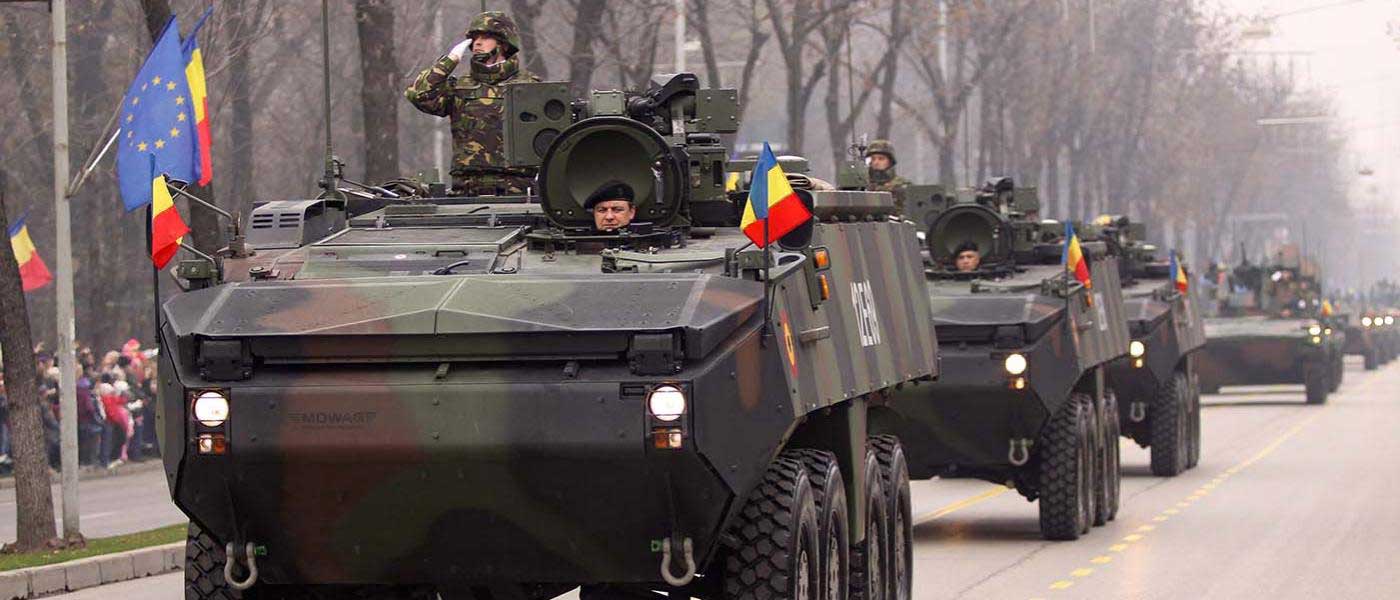Closer EU Defence Co-operation Achieves Important Milestone
EU member states collaborate on defence projects. But the UK will have no decision-making power or influence.
12 December 2017

With the UK scheduled to leave the EU and America reappraising its commitment to NATO and European security under President Donald Trump, EU member states have sought to strengthen defence and security cooperation.
On 11 December 2017, 25 EU member states took the first major step towards the formation of a European Defence Union under the auspices of the Permanent Structured Cooperation (PESCO) on defence, which was formally established at the meeting of the Foreign Affairs Council. PESCO will see countries work together on collaborative defence projects across maritime, cyber, command and control and armoured vehicles.
“I welcome the steps taken today by member states to lay the foundations of a European Defence Union,” said European Commission president, Jean-Claude Juncker. “Europe cannot and should not outsource our security and defence. The European Defence Fund that the European Commission proposed will complement these efforts and act as a further incentive for defence co-operation, including potential funding for some of the projects presented today."
The 25 EU member states who have signed up to PESCO are Austria, Belgium, Bulgaria, Czech Republic, Croatia, Cyprus, Estonia, Finland, France, Germany, Greece, Hungary, Italy, Latvia, Lithuania, Luxembourg, the Netherlands, Poland, Romania, Slovenia, Slovakia, Spain, Sweden, Ireland and Portugal. PESCO formed part of the original 2009 Lisbon Treaty, but was never activated, until now.
Under PESCO, the Council of Ministers will be responsible for the overall policy direction and assessment mechanism to determine if member states are fulfilling their commitments. Each project will be managed by those countries which contribute to it. Capabilities developed through the PESCO mechanism will remain under national control. They will not be “EU” assets and will not form the basis of an “EU Army”. EU member states will be able to make those capabilities available through other frameworks such as NATO and the UN.
The UK government did not sign the Join Notification on 13 November 2017. As such it will remain outside of PESCO, which means it will have no decision-making power over PESCO governance or any veto over its future strategic direction, which has been openly acknowledged as greater EU integration in the field of defence.
The 25 member states also agreed a declaration announcing the preparation of first collaborative projects in areas including the setting up of an EU medical command, military mobility, maritime surveillance and cyber security.
While PESCO is purely intergovernmental, the €5.5 billion per annum European Defence Fund proposed by the European Commission in June will create incentives for member states to co-operate on joint development and the acquisition of defence equipment and technology through co-financing from the EU budget and practical support from the Commission. “Pooling defence capacities in Europe makes perfect economic sense," said Juncker.
Additionally, the Defence Fund fully finances grants for collaborative research projects, with first grant agreements expected to be signed before the end of 2017. Member states are expected to reach agreement on the European Defence Fund at a Council meeting this month.
A list of the first collaborative PESCO projects:
European Medical Command
European Secure Software-defined Radio (ESSOR)
Network of logistic hubs in Europe and support to operations
Military mobility
European Union Training Mission Competence Centre (EU TMCC)
European Training Certification Centre for European Armies
Energy Operational Function
Deployable Military Disaster Relief Capability Package
Maritime (semi-autonomous systems for Mine Countermeasures (MAS MCM)
Harbour & Maritime Surveillance and Protection (HARMSPRO)
Upgrade of Maritime Surveillance
Cyber Threats and Incident Response Information Sharing Platform
Cyber Rapid Response Teams and Mutual Assistance in Cybersecurity
Strategic Command and Control (C2)
System for CSDP Missions and Operations
Armoured Infantry Fighting Vehicle / Amphibious Assault Vehicle / Light Armoured Vehicle
Indirect Fire Support (EuroArtillery)
EUFOR Crisis Response Operation Core